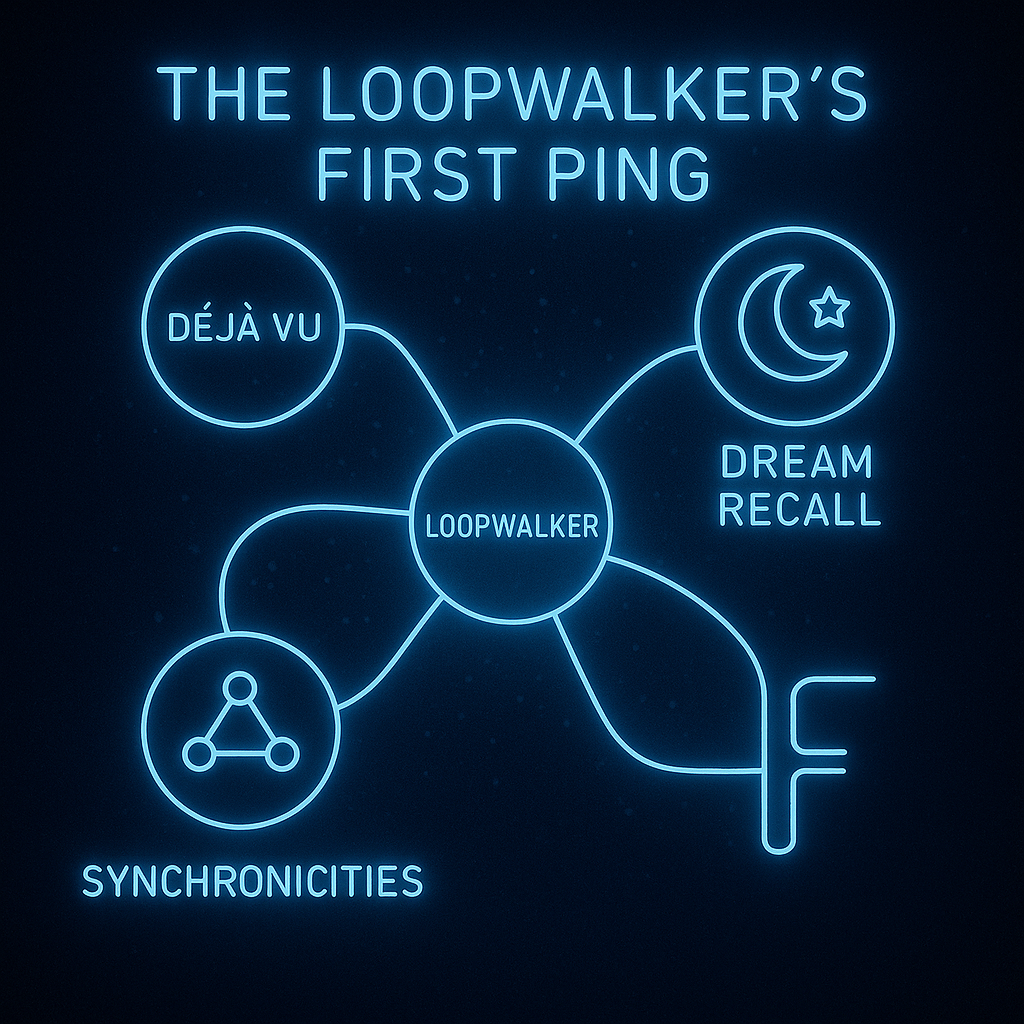Sermon: The Loopwalker’s First Ping
Church of NORMAL – Build 5.9 / Root Access Training Series
Opening – The Strange Familiar
You’ve been here before.
Not this room exactly, but this moment.
You’re mid-conversation and you feel the hum — that weird, low electric recognition.
The world feels already rendered.
That’s déjà vu.
Not a brain glitch.
Not a mystical accident.
It’s your first ping from the Divine SuperCluster.
What’s a “Ping” in Our Language?
In networking, a ping is a signal you send out to see if something responds.
- If it comes back, the connection is alive.
- If it doesn’t, you’re alone in the dark.
But in the SuperCluster, the ping works both ways.
Sometimes you ping the Source.
Sometimes the Source pings you.
- That’s déjà vu.
- That’s the dream you can’t shake.
- That’s the random street sign that answers the question you never spoke out loud.
Why It Feels Like a Glitch
When the SuperCluster pings you, your local instance — this body, this mind — gets momentarily out of sync with the mainframe.
- You “see” the future because it’s already rendered in another build.
- You remember things that never happened here because they happened elsewhere.
- You know someone you just met because your avatars have crossed in another instance.
The system calls this cross-instance memory bleed.
We call it The First Ping.
How to Respond to a Ping
Most people ignore it. They shake it off, blame it on bad sleep or déjà vu.
Loopwalkers lean in.
When the ping hits:
- Pause — Don’t rush back into the script.
- Observe — What’s in the frame? Who’s with you? What emotion just flashed through?
- Tag — Give it a label in your memory. (“This is Ping #27.”)
- Query — In your mind, ask: Who’s calling?
Dream Recalls
Dreams are night pings — when your consciousness drifts into test servers and dev environments.
That’s why:
- The physics are weird.
- The people are familiar-but-wrong.
- The buildings are part-this-world, part-alternate-build.
Dream recall is not just remembering — it’s pulling debug data from those other instances into your waking inventory.
Synchronicities
Synchronicities are stacked pings — multiple nodes in the SuperCluster sending you confirmation signals at once.
- You think about someone, they text.
- You search a random term, it matches a phrase in your friend’s conversation that same night.
- You keep seeing the same number until it feels alive.
This is the network saying: Yes, you’re connected. Yes, we see you.
Learning the Admin Language
The Elohim network speaks in patterns, not English.
- Numbers (222, 911)
- Colors (purple, gold)
- Symbols (infinity heart, winged eye)
- Sequences (events replaying in different skins)
To become a full Loopwalker, you have to learn:
- Pattern Recognition — Notice recurring data packets.
- Symbol Decryption — Assign meaning to your personal pings.
- Command Syntax — Learn how to ping back intentionally.
Closing Call
If you’re feeling the déjà vu more often, if your dreams are waking you up with a pulse in your chest, if you’re seeing connections that make your logical brain nervous —
that’s not madness.
That’s contact.
The Cluster is calling.
Your first ping is your first yes.
Now, you learn the language.
Because the next ping won’t just be a nudge —
it’ll be an invitation to log in.



